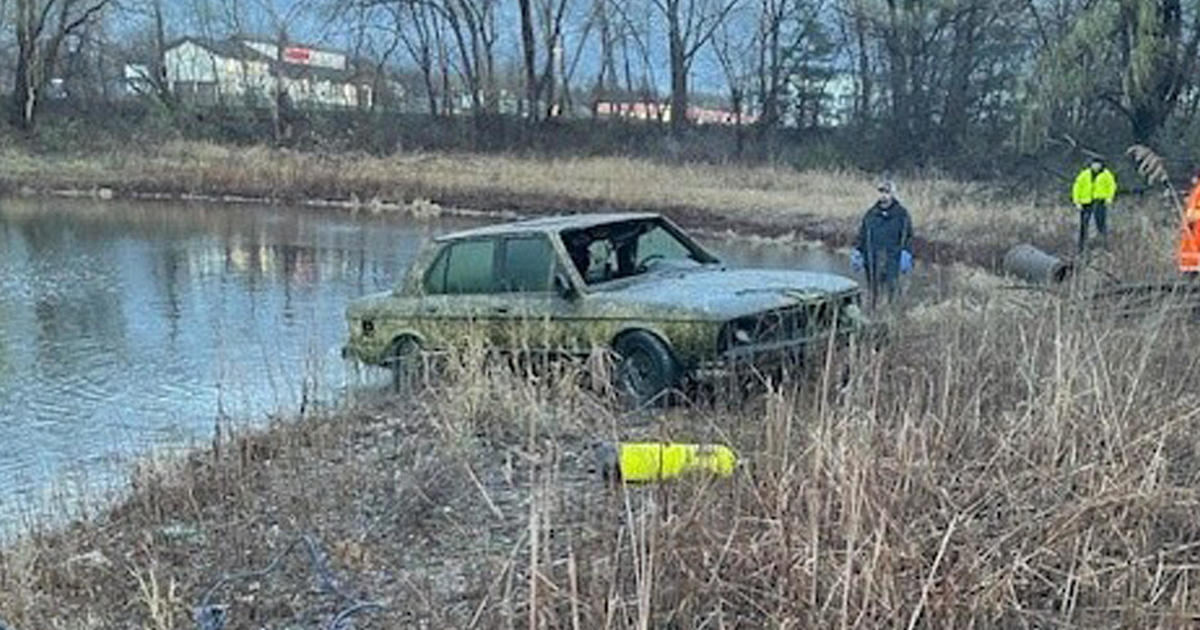Dark Matter Detector Nearing Activation In SD Mine
SIOUX FALLS, S.D. (AP) — Scientists hoping to detect dark matter deep in a former South Dakota gold mine have taken the last major step before flipping the switch on their more than $300 million experiment and say they may be ready to begin collecting data as early as February.
What's regarded as the world's most sensitive dark matter detector was lowered earlier this month into a 70,000-gallon water tank nearly a mile beneath the earth's surface, shrouding it in enough insulation to hopefully isolate dark matter from the cosmic radiation that makes it impossible to detect above ground.
And if all goes as planned, the data that begins flowing could answer age-old questions about the universe and its origins, scientists said Monday.
"We might well uncover something fantastic," said Harry Nelson, a professor of physics at University of California, Santa Barbara and a principal investigator on the Large Underground Xenon experiment. "One thing about our field is that it's kind of brutal in that we know it's expensive and we work hard to only do experiments that are really important."
This one's definitely been costly, but like the discovery of the Higgs boson — dubbed the "God particle" by some — earlier this year in Switzerland, the detection of dark matter would be a seismic occurrence in the scientific community.
Scientists know dark matter exists by its gravitational pull but, unlike regular matter and antimatter, it's so far been undetectable. Regular matter accounts for about 4 percent of the universe's mass, and dark matter makes up about 25 percent. The rest is dark energy, which is also a mystery.
The search in South Dakota began in 2003 after the Homestake Gold Mine in the Black Hills' Lead, S.D., shuttered for good. Scientists called dibs on the site, and in July, after years of fundraising and planning, the LUX detector moved into the Sanford Underground Research Facility, 4,850 feet below the earth's surface. It took two days to ease the phone booth-sized detector down the once-filthy shaft and walkways that originally opened for mining in 1876 during the Black Hills Gold Rush.
There, the device was further insulated from cosmic radiation by being submerged in water that's run through reverse osmosis filters to deionize and clean it.
"The construction phase is winding down, and now we're starting the commissioning phase, meaning we start to operate the systems underground," said Jeremy Mock, a graduate student at the University of California, Davis who has worked on the LUX experiment for five years.
Carefully submerging the delicate detector into its final home — a water-filled vat that's 20 feet tall and 25 feet in diameter — took more than two months, Mock said.
Scientists are currently working to finish the plumbing needed to keep the xenon as clean as possible. The xenon, in both liquid and gas form, will fill the detector and be continuously circulated through a purifier that works much like a dialysis machine, pulling the substance out to remove impurities before pushing it back into the detector.
Keeping the water and xenon pristine will help remove what Nelson called "fake sources" — or stuff that scientists have seen before, such as radiation, that could serve as false alarms in their efforts to detect dark matter.
Nelson likens the experiment to Sherlock Holmes' approach to discovering the unknown by eliminating the known.
Once the data start to flow, it'll take a month or two before the detector is sensitive enough to claim the "most-sensitive" title, Nelson said.
After that, the scientists involved hope to start seeing what they covet most: something they've never seen before.
(© Copyright 2012 The Associated Press. All Rights Reserved. This material may not be published, broadcast, rewritten or redistributed.)



